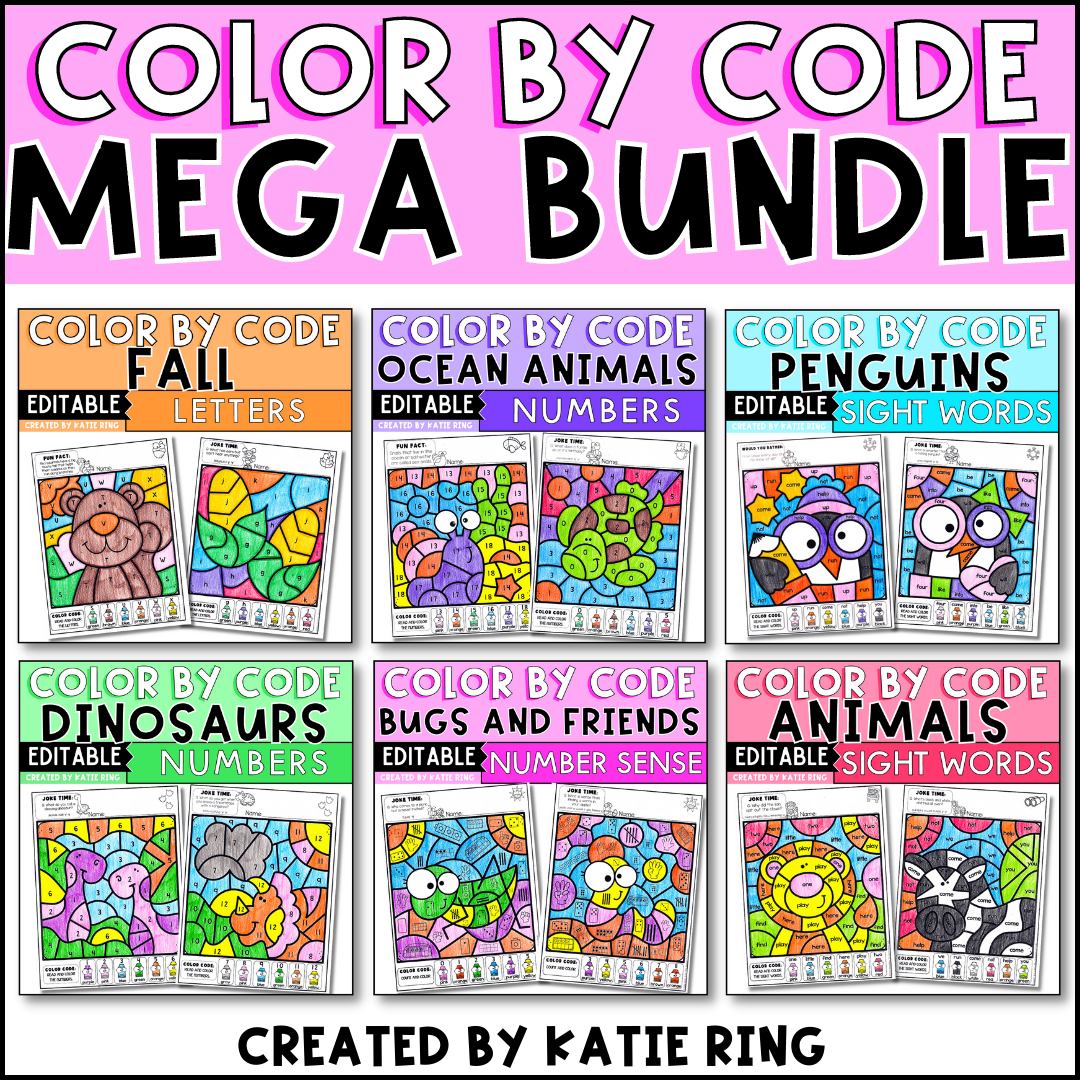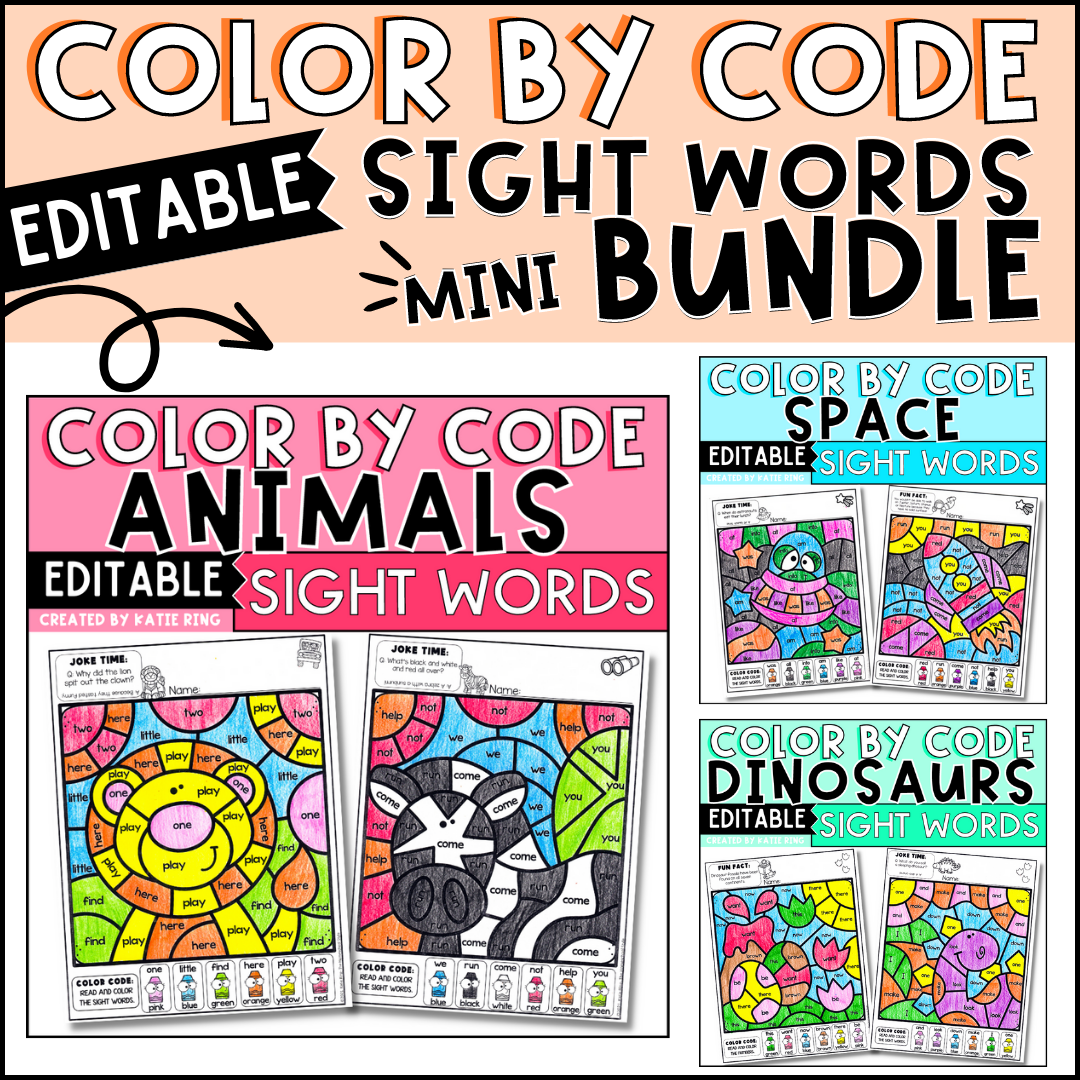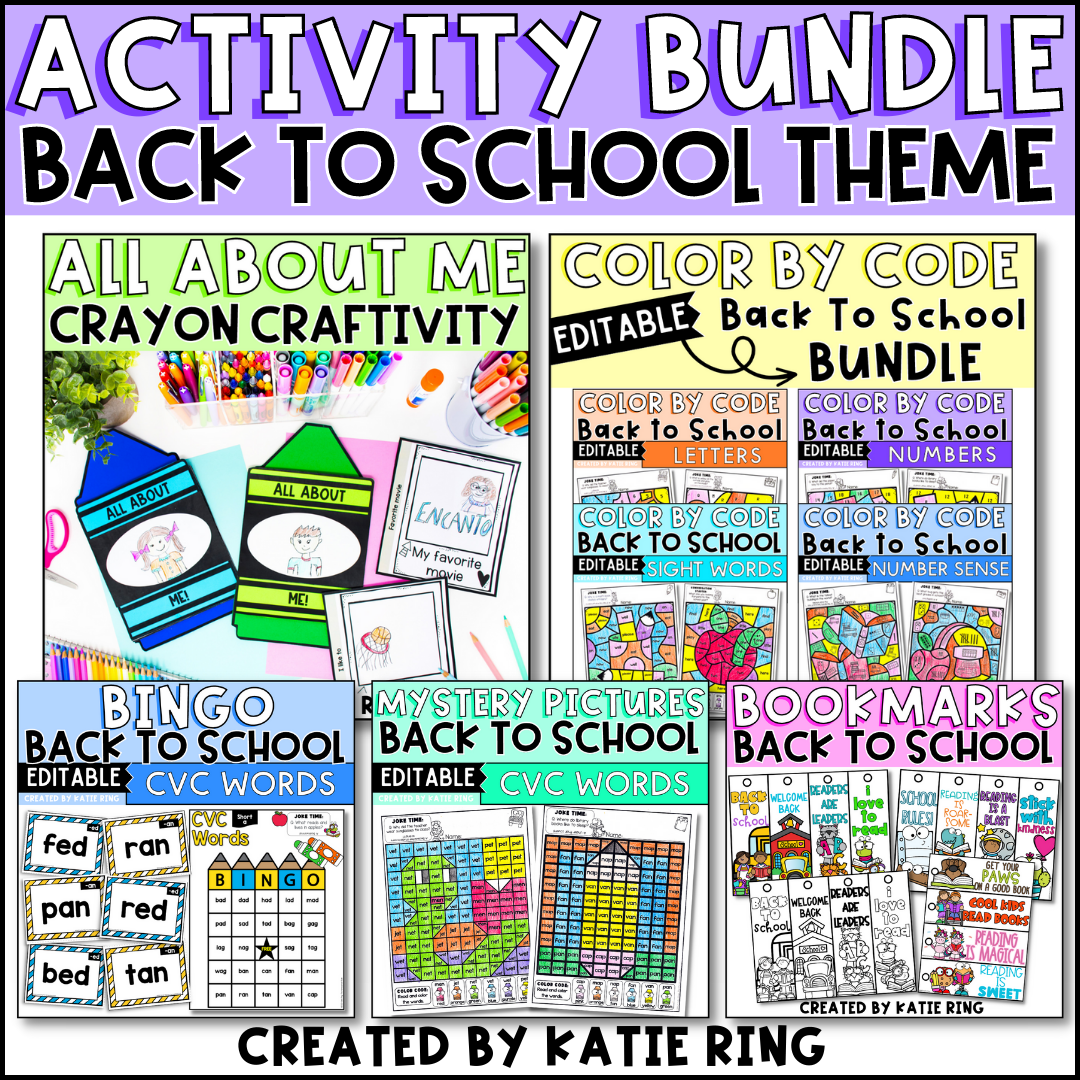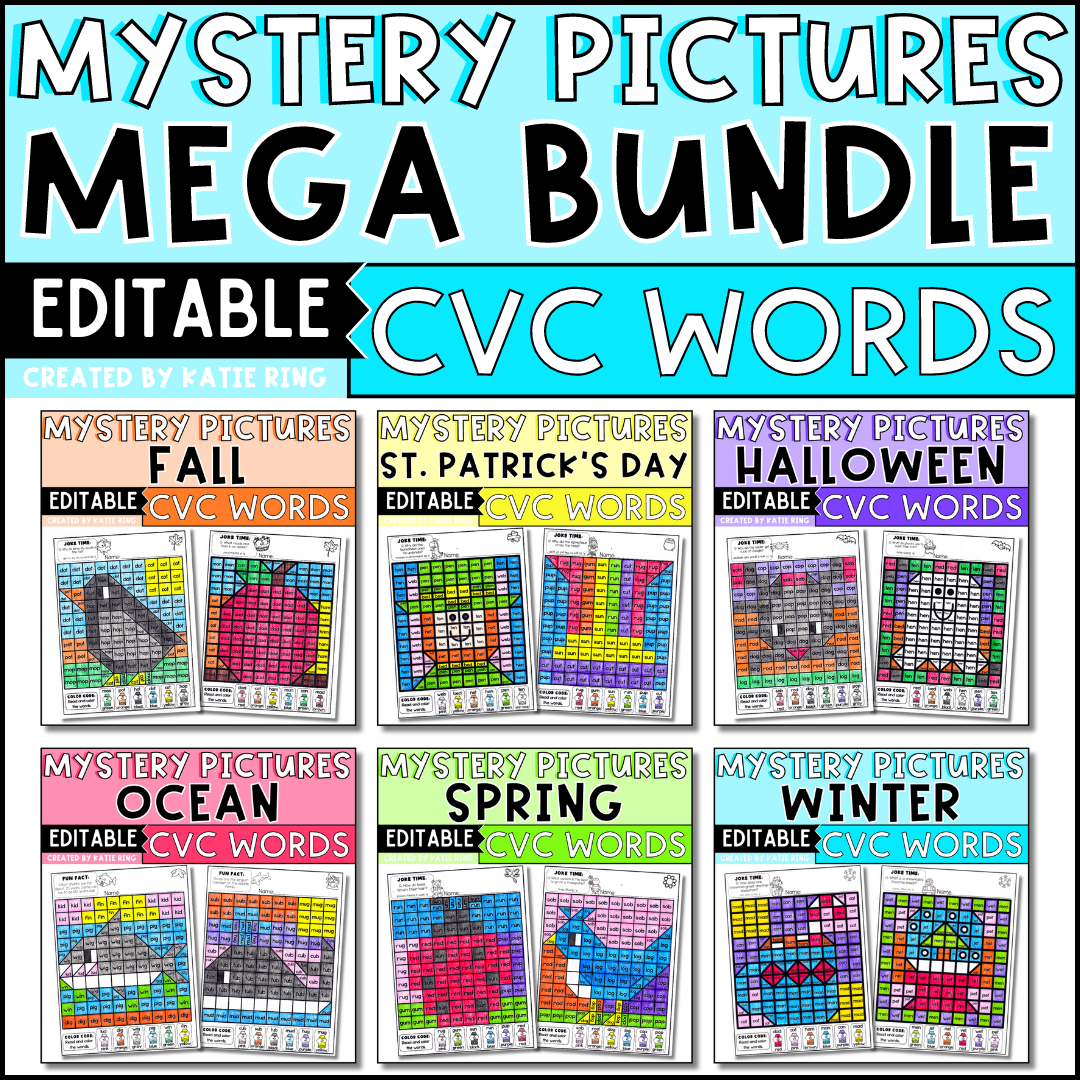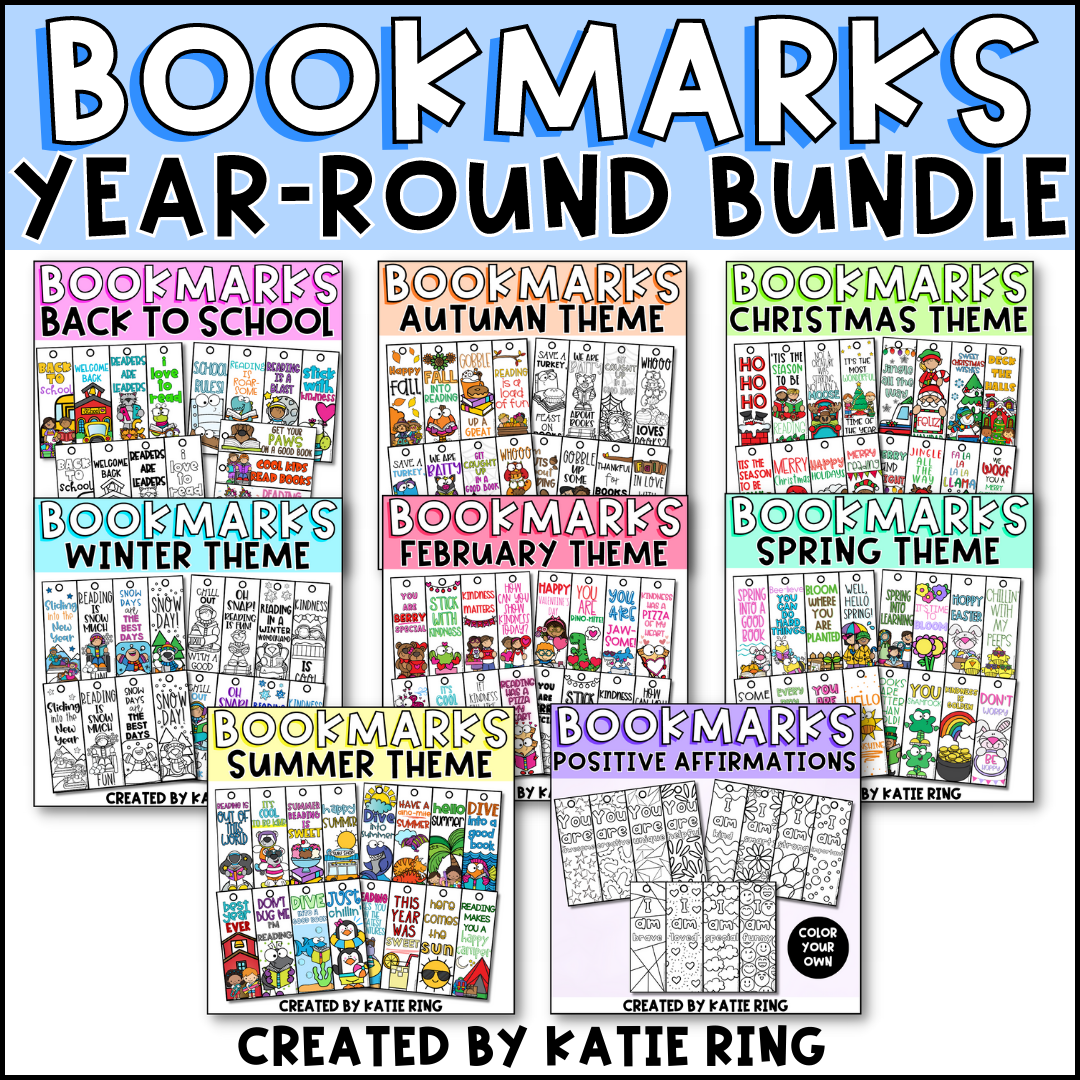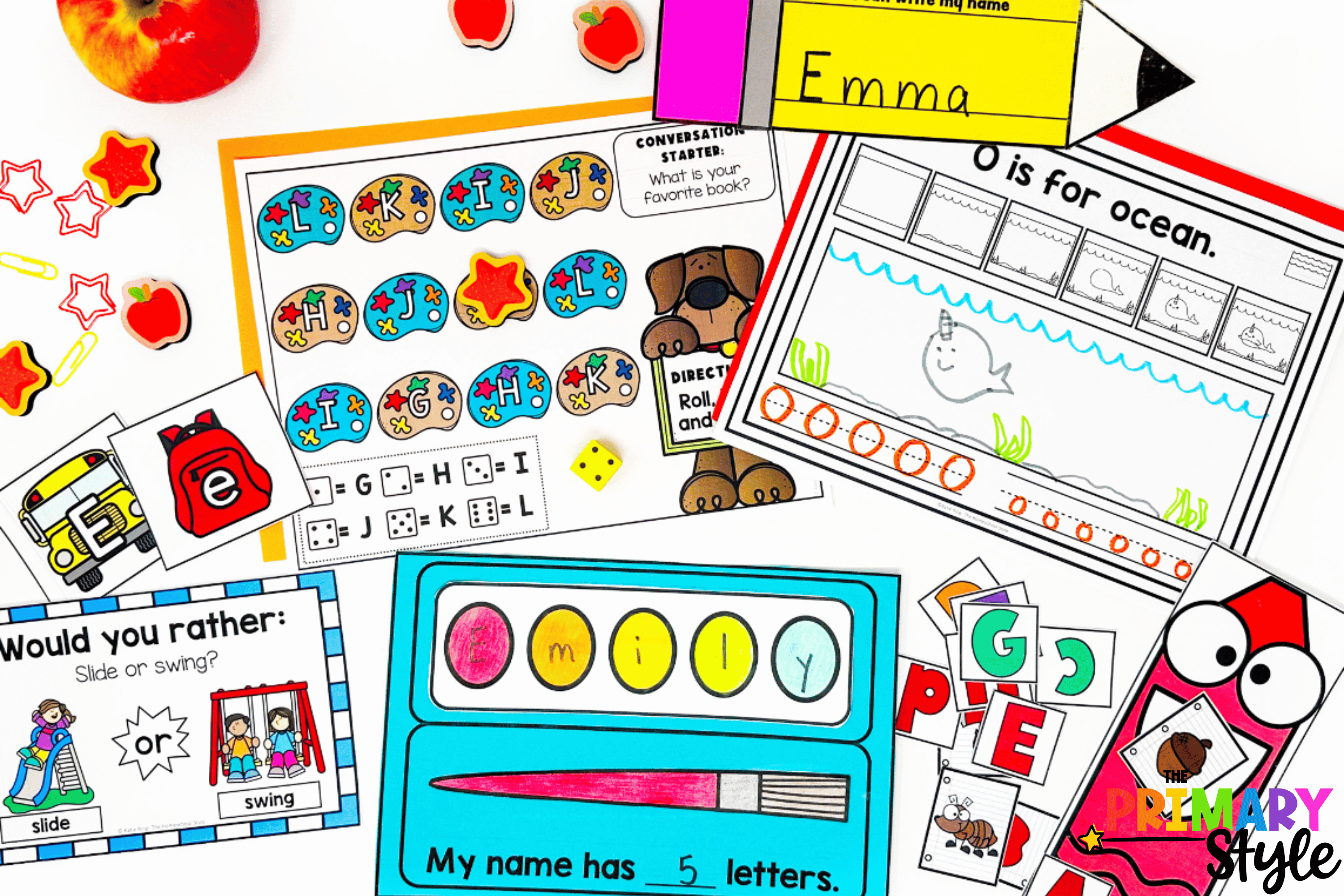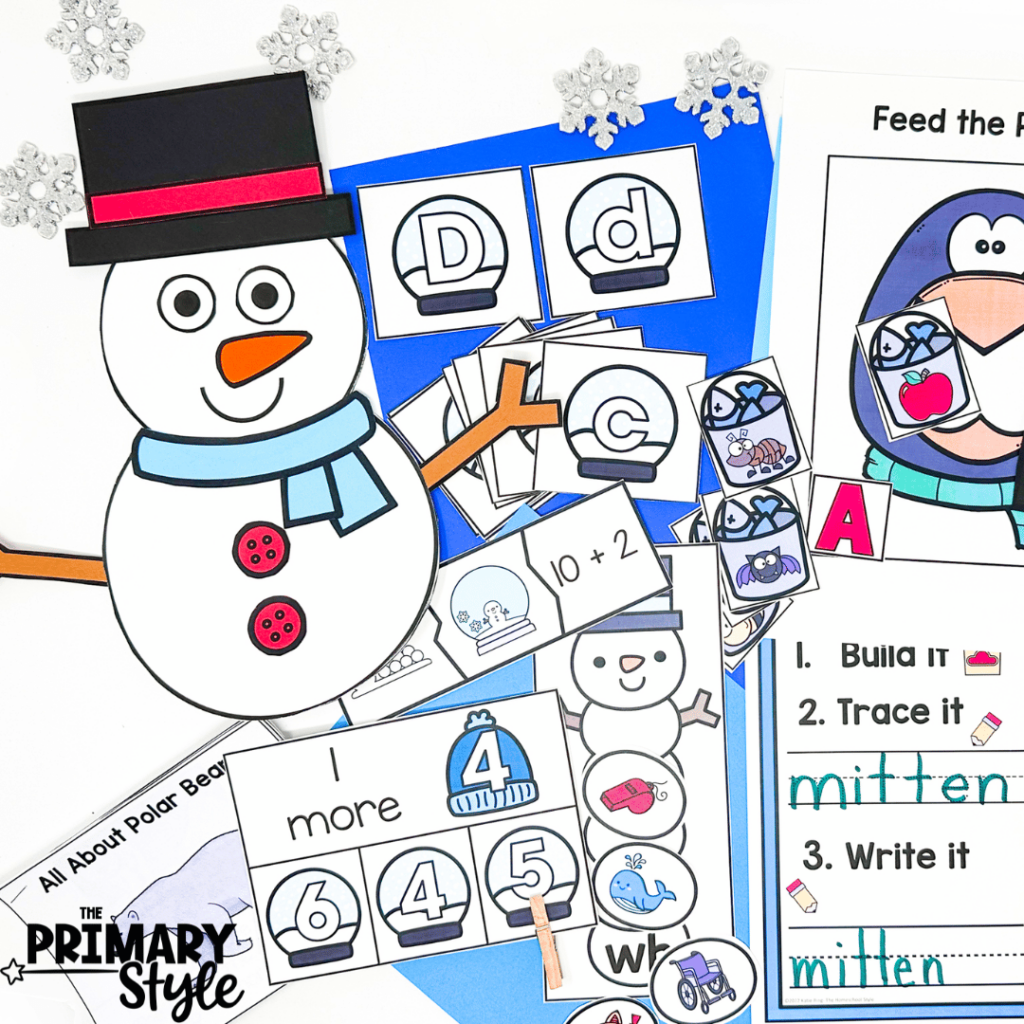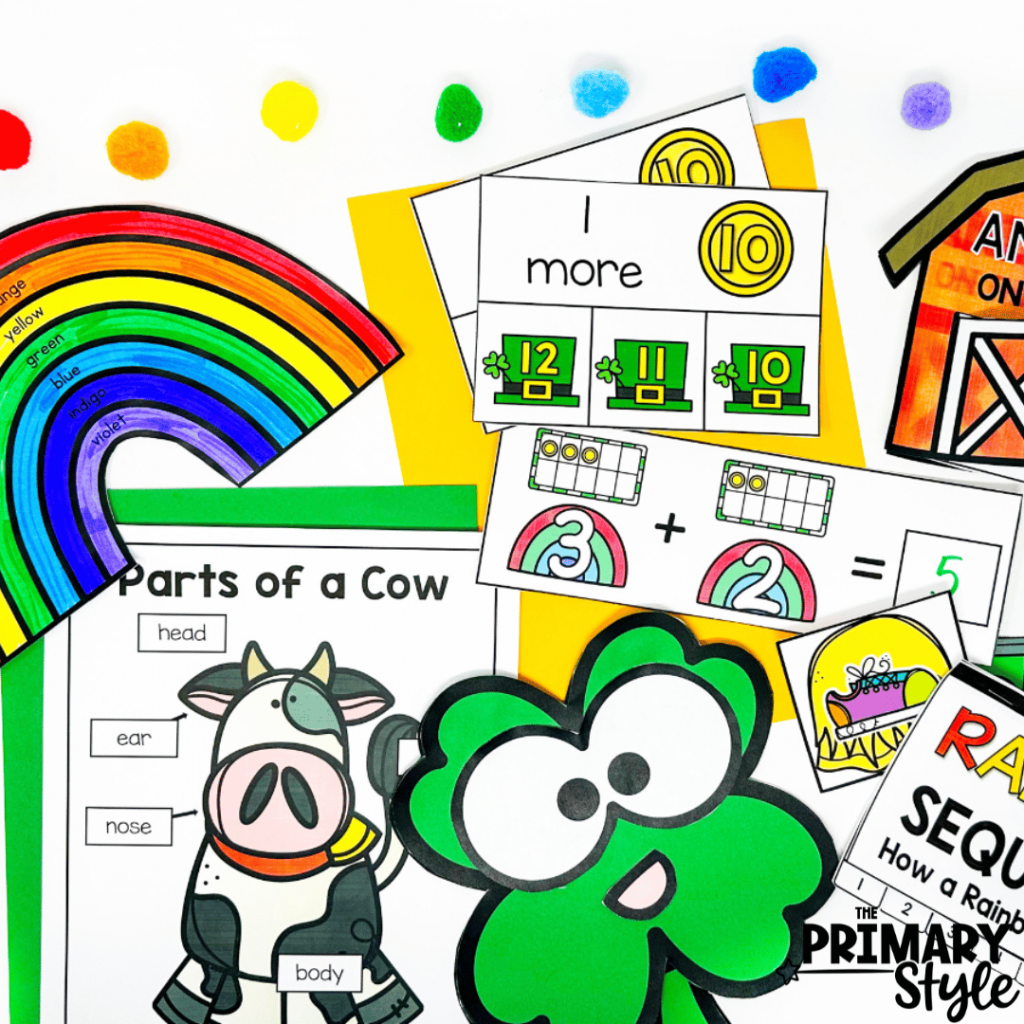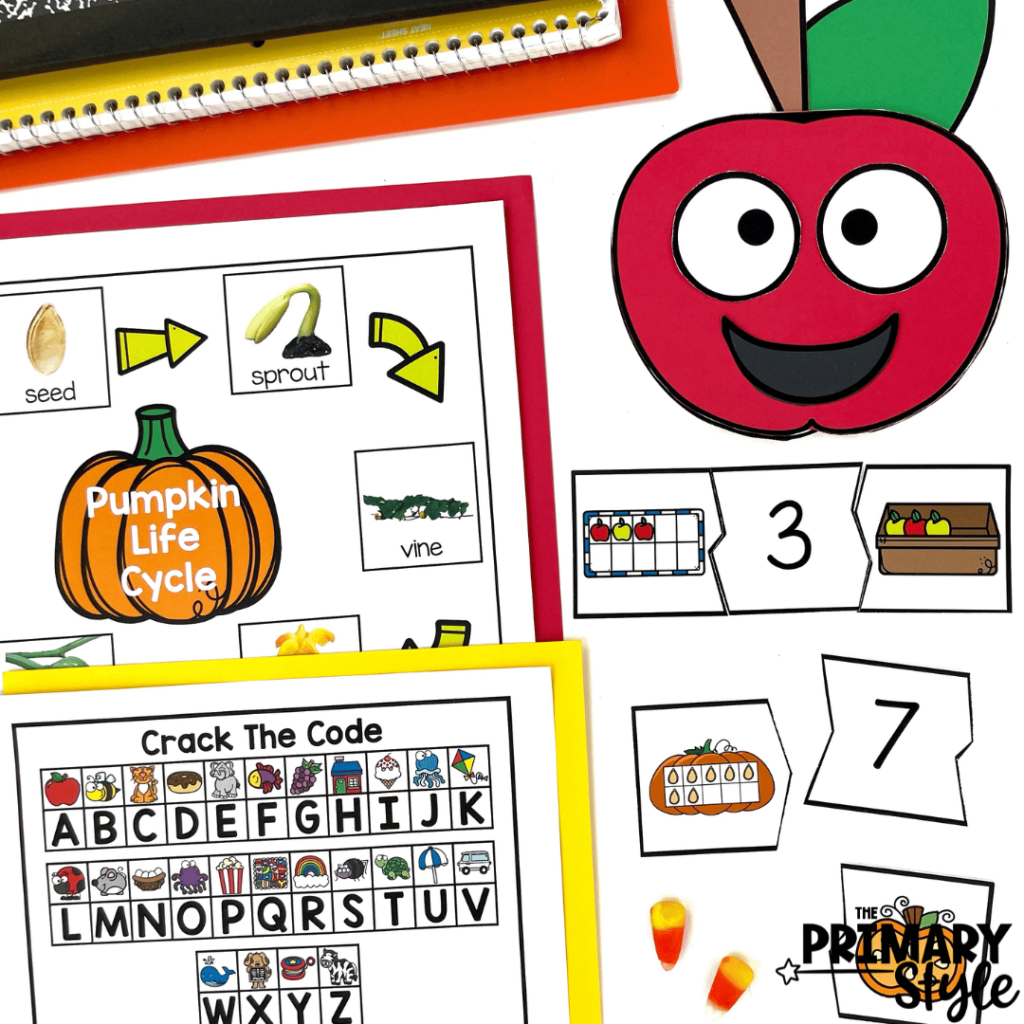Thematic teaching is near and dear to my heart for so many reasons. If you’re new to this concept, prepare to be amazed! Today we’re going to talk about what thematic teaching is and how to find a great thematic unit to use in your lesson plans. I hope that this list will make it quick and easy for you to identify what makes up a good thematic unit and how to get started using one in your room!
What is a Thematic Unit?
First off, what are we talking about here? A thematic unit is a series of lessons and activities that integrate a variety of subjects around one specific theme. For example, you might plan a whole thematic unit about winter. In this unit, you will explore different seasonal topics that relate to winter through math centers, literacy activities, writing lessons, craftivities, learning games, and more. Thematic teaching allows you to explore a particular topic in depth, while also weaving in all of your key skills practice that’s on your to-do list. I love this teaching style because it allows us to learn about a new topic each month or so while still hitting those math and ELA standards! In a busy primary classroom, this is pretty spectacular!
Another great benefit to using a thematic unit is that you will get to spend a little more time on science and social studies topics than you normally would due to the cross-curricular nature of your lessons. I think we can all agree that we often run out of time for these topics. This won’t be an issue when you’re using thematic units in your room! You’ll be able to weave thematic lessons into your writing or math block while learning about an interesting science or social studies topic in the process.
Lastly the best benefit, in my opinion, is high engagement. As primary teachers, we’re always looking for ways to keep our little learners interested in the curriculum. A great thematic unit is the BEST way I have found to do so! Students look forward to exploring new topics each month and will eagerly perk up during your lessons. This makes it fun and easy to work on important concepts such as sight words, phonics skills, number sense, and more!
What Makes a Great Thematic Unit?
So, how do we know we’re planning a thematic unit that will be a knockout in the classroom? I’m so glad you asked! There are a few things that are essential when it comes to choosing and planning a great thematic unit. These 5 things should be on your radar as you begin planning and building a thematic unit in your room.
1. Choose a Thematic Unit with an Engaging Topic
First and foremost, it’s so important that the thematic unit topic you choose is an engaging one for your students. The last thing we want to do is select a topic that none of the students are interested in! This would not be ideal if you plan on studying it for a month at a time! So, as you work on selecting a thematic unit, consider what interests your students and how you can find something to study that will light them up with excitement. Every classroom is different, but when it comes to primary learners, there are usually some common themes that everyone loves to explore. Some popular topics include:
- Seasons (winter, spring, summer, fall)
- Animals & Insects (bats, spiders, penguins, dinosaurs, etc.)
- Holidays (Christmas, Valentine’s Day, St. Patrick’s Day, etc.)
- Science Topics (space, plants, 5 senses, weather, etc.)
- Community-Based Themes (farm, community helpers, all about me, my family, etc.)
Any of these options are pretty safe when it comes to ensuring that your students will be interested in your lessons. You’ll also want to make sure that the topics you choose align with the time of year as relatability – more on that below!
How to Plan Out Your Thematic Units
If you’re anything like me, it can be hard to choose. To help combat this, I always recommend sitting down at the beginning of the year and doing some high-level planning. Start thinking about what types of themes you want to use in your lessons and write them down. Then, grab a calendar and loosely plot them out to see how it fills your year. It doesn’t have to be perfect, just a rough guideline to help kickstart the process. Planning a whole year of thematic units out will ensure that you have time to fit in everything you’d like to focus on. For more on how to do that, be sure to read this post next!
2. Incorporates Cross-Curricular Learning
Next, an essential component of a great thematic unit is that it incorporates cross-curricular teaching. This is an absolute must in my opinion because you’re going to want to make the most of your time. When choosing a thematic unit, it’s important to find one that touches on many different subjects so that you can make sure you’re hitting all of the standards and skills required each month. This will allow you to explore your theme in depth while also working on important math and literacy skills. For example, inside my thematic units you will find:
- vocabulary activities
- writing prompts
- labeling activities
- literacy games and centers
- math games and centers
- mini readers
- science posters & activities
- crafts
- book list
- no-prep practice pages
This wide variety of activities tied to our central theme ensures that students will be working on all of the important skills and subjects throughout the month. Not only does this make lesson planning easier, but it means that students will get to explore this topic in many different fun ways. This helps to appeal to different learning styles and interests in your classroom.
It also will alleviate some of the pressure when it comes to finding ways to keep students interested in skills-based learning such as letters, numbers, and number sense. We all know that these topics can get repetitive and a tad boring, but when we use a fun theme to make them feel “new” each month, it’s much easier to appeal to our little learners.
3. Relates to Real World Topics
Another important factor when selecting a thematic unit is to choose one that relates to real-world topics. While unicorns are popular among young students, they don’t exactly tie into real-world learning. The reason I believe this is so important is because when you begin with a thematic unit, the goal is really to make the most of your time and facilitate the most learning opportunities. When we choose a topic that lacks real-world depth, it’s hard to do this!
Instead, focusing on an important topic that ties into science and social studies standards will mean that you’ll be exploring something more meaningful and relatable. This is especially true if you’re careful to align your topics with the current seasons and holidays. For example, in September, you might do an in-depth study on Apples and Pumpkins. During this time, students will be seeing apples on the trees and in the grocery stores, as well as roadside stands lined with bright orange pumpkins! This relatability makes your topic more engaging and exciting for students because they will be able to connect it to their lives.
Another important reason to choose real-life topics is that you will find it’s much easier to find accompanying materials to use alongside your thematic units. For example, in my classroom, I’m a big fan of picture books to supplement our learning. You might also use educational videos and other learning materials to help students get the most out of your unit. Real topics are always best when it comes to your thematic unit!
4. Encourages Deeper Thinking
This next thing to look for is very important! You want to select a thematic unit that encourages deeper thinking in your classroom. Look for topics and activities that allow your students to question, analyze, and form opinions on the topic. This is where those real-world topics will come in handy again! As students learn about a topic and see it in their own environment, you’ll likely begin to notice that those wheels start to turn! This is exactly what we’re looking for in a thematic unit!
Another way you can ensure that your thematic unit encourages deeper thinking is to be intentional about the types of activities you include. For example, in each of my thematic units, you will find mini-readers on specific topics. These come in handy as we’re learning about a new theme. I like to use these in small groups so that we can have a group conversation after reading. It’s always interesting to see what stood out to each child on the topic. We follow this up with some writing prompts to allow the students a chance to share opinions, or get creative!
Another way to encourage deeper thinking in your classroom is to include thematic activities that allow students to explore independently. For example, if you’re studying Autumn, you might set up a fall science table. Include things like vocabulary cards, real fall leaves, acorns, pinecones, hay, and pumpkins. Students can use magnifying glasses to explore the materials with their senses and connect them to the learning activities you’re doing in the classroom. Providing these types of opportunities is such a great way to encourage deeper thinking on a topic!
5. Uses Multi-Sensory Approach
Last on this list, it’s SO important to use a multi-sensory approach in your thematic lessons. Our primary learners thrive with activities that appeal to different senses, so this is a must! Make sure your thematic unit includes a variety of activities to meet this need. Not only will it help them soak up the material and learn more, but it boosts engagement like nothing else. Gone are the days of boring worksheets! Focus on fun activities to keep student interest such as:
- colorful readers
- tracing activities
- play dough mats
- fine motor activities
- engaging centers
- crafts and more!
When creating my thematic units, I was careful to include a variety of activities that appeal to all the senses. Clip cards, roll & cover centers, fine motor crafts, draw and write prompts, play dough mats, and colorful readers make the units engaging and appealing to everyone! A multi-sensory approach makes learning fun and will keep your kiddos learning all the way through your thematic unit.
Simplify Your Thematic Unit Planning
So, are you feeling more confident when it comes to choosing a spectacular thematic unit for your little learners? I sure hope so! Using these criteria will ensure that your thematic unit hits all the requirements for engaged learning in the classroom. You can take these tips and build your own thematic unit by selecting activities around a specific topic or theme and adding supplemental materials. Just be sure to run each component of the unit through the list to ensure it will fit the bill! Alternatively, if you’re looking for a simpler option, I’ve got a fantastic solution for you. . .
Thematic Units for the Whole Year
I have created a whole year’s worth of thematic units that meet all of these criteria and are proven to be successful in the primary classroom. Inside you’ll find nearly endless activities to engage and inspire your learners! Each unit focuses on a couple of fun themes and covers a wide variety of subjects to ensure that your students are getting what they need to thrive. The units are designed to save you time in the classroom and make learning fun! Some of the topics include:
- Apples and Pumpkins
- Bats and Spiders
- All About Autumn
- Christmas & Holidays
- All About Winter and more!
Check out my Thematic Unit Bundle to see all of the amazing themes you can explore with your students. There are 13 total resources included, so you will be all set for a whole year of learning! I’ve done the heavy lifting for you by compiling math and literacy centers, writing activities, reading activities, crafts, science, and even suggested book lists. All you’ll need to do is print and prep and you’re ready to start learning. These resources will take the stress out of planning a good thematic unit and make more time for learning and fun in your classroom! Have fun exploring new themes and topics with your students!
Looking for More Resources?
Want to learn more about thematic teaching? Check out these posts next!
- Using Thematic Teaching In The Classroom
- Everything You Need To Know About Classroom Learning Centers
- Planning a Year of Lessons Using Thematic Teaching
Save This Post
This post will make planning a thematic unit fun and easy. Be sure to pin it on Pinterest so you don’t lose track of these great ideas!

